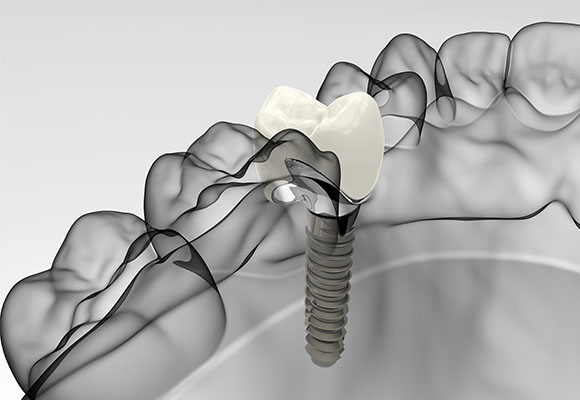
Dental Implants in Dartmouth
Sometimes you may lose a tooth due to periodontal disease or another cause such as decay or injury. Dental implants are one of several ways to replace the lost tooth. Implants can be used to support a single tooth, bridge, or dentures.
What Exactly Is an Implant?
A dental implant is an artificial tooth that is made of two parts - a titanium fixture which is placed surgically and the crown that in inserted after. The dental implant serves to either replace a single missing tooth or serve as support under a denture to improve retention and stability.
Dental Implants
Dental implants are made of titanium. Titanium is very strong and is considered inert, which means it won’t irritate your natural tissues. The implant inserted into your jawbone and acts like an artificial root. After the implant heals your family dentist will make a replacement tooth and attach it to the implant.
Dental implants can be placed into the bone after a tooth is extracted. Sometimes this can be done right away but we usually allow the bone to heal for a time prior to implant placement.If there isn’t enough bone to support an implant you may require a procedure called bone grafting (bone augmentation/ridge augmentation). This can sometimes be done at the same time as the implant placement or it may need to be done in a separate procedure.
Single implants - A single tooth can be replaced by placing a single titanium post on top of which the tooth attached.
Implant supported bridge- Multiple teeth can be restored by connecting two or more implants. Such bridges mimic traditional bridges around teeth.
Implant supported dentures
Removable denture - In cases where the dentures are not fitting well, implants with locators can be used to serve as retention posts. These dentures are very stable and can be removed easily by patients.
Fixed prosthesis - for those wishing to not have any removable denture, a fixed prosthesis can be fabricated of 4-6 implants. Very often, we can take a patient from having teeth that need extraction, to a fixed temporary denture on implants, in a single day! Patients never have to go without an esthetic and functional smile.
Bone Grafting
In most sites where teeth are congenitally missing or lost due to periodontal disease or cavities, the bone volume is resorbed within the first 3-6 months. This creates a treatment challenge for dental implants. In order to create a functional and successful outcome, often time we need to regenerate some lost bone. This can be done by Guided Bone Regeneration procedures that involve bone materials (protein scaffolds) from pig, cow or cadavers. In some cases, we can utilize your own bone to augment the site.
Sinus Lift
In the top jaw (maxilla) there are two air spaces called the maxillary sinus. The floor of these sinus are often touching the roots of the posterior (pre-molar and molar teeth). In order to get adequate height of bone to place our implants, your periodontist may recommend a sinus lift procedure. In some patients, this procedure can be done simultaneously with the implant placement, while in the others the sinus lift has to heal for 5-6 months before placement of the implant.
Management of Peri-implant Disease and Conditions
Dental implants are commonplace in todays dental treatment plans. They are very popular due 1) relatively high success rate, 2) avoidance of cutting down natural teeth, 3) good alternative to removal dentures. However in some cases implants do get complications. As specialists in the supporting structures of teeth and implants, periodontists are in excellent position to help manage peri-implant disease. This can be done by either performing non-surgical debridement or performing open flap procedures to help manage bone loss around implants. Occasionally gum grafting is performed around implants to facilitate better cleaning access and to reduce inflammation in the soft tissue.



